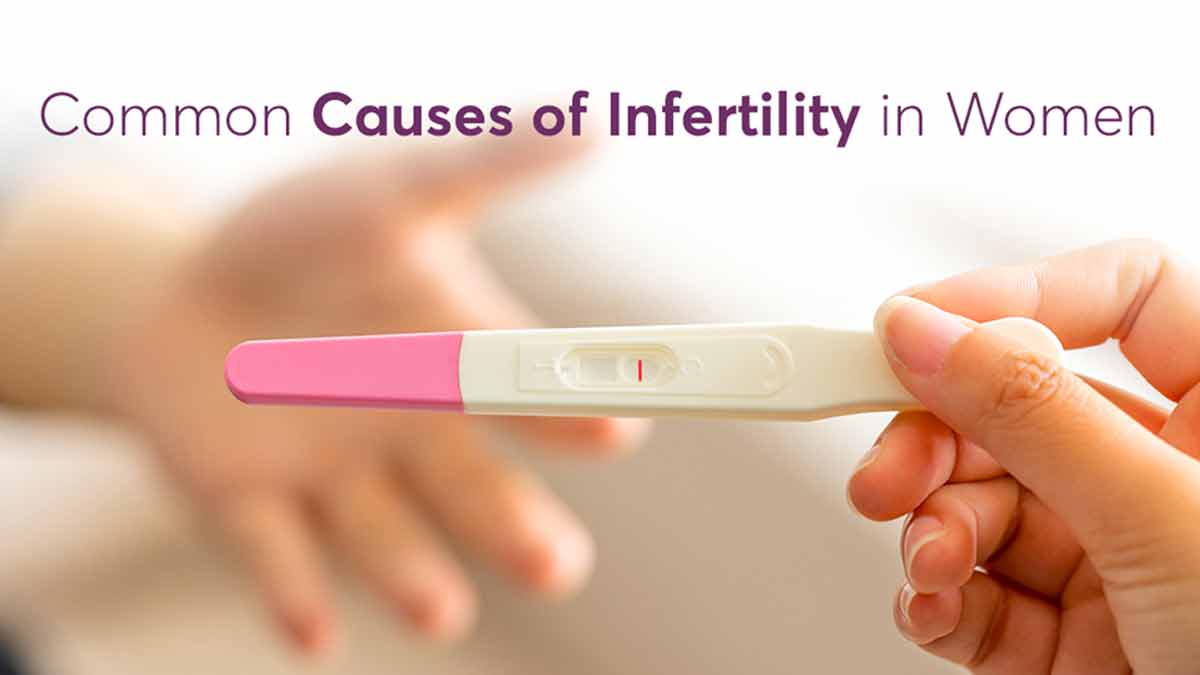
Common Causes of Infertility In Women
Having a baby is usually an emotional adventure. For numerous women, this road can be filled with surprises, hurdles, and doubts. Infertility remains a health issue impacting millions of women in India. This subject is not discussed much, leading to confusion. However, in this article, we will unravel the different reasons for infertility in women, highlight this problem, and provide understanding to those walking on this difficult path.
Hormonal Imbalances
The first and foremost reason for infertility in women is hormonal imbalance. Instances such as the presence of polycystic ovary syndrome (PCOS) and thyroid disorders could affect hormone production and ovulation in an adverse manner. Polycystic ovary syndrome, for example, is a condition in which women's menstrual cycles are not regular, and small cysts are present on the ovaries. These irregular hormones are the ones that stand in the way of regular ovulation and pregnancy for women.
Ovulatory Disorders
Ovulatory disorders can also cause infertility in women. These all could be a result of hormonal imbalance, stress, excessive physical activity, or obesity. Ovulatory disorders can be characterized by irregular or even absent monthly periods. This inherently makes it difficult to predict ovulation and time the intercourse properly. This may be done by making use of techniques such as charting basal body temperature and using ovulation calculators which can help in better managing these issues.
1
2
3
4
The Age-Related Infertility
Age is the key factor in female fertility. The quality and quantity of a woman's eggs gradually decline as she ages. In the mid-30s, a woman’s fertility begins to decline and it progressively declines further in her late 30s and 40s. Age-related infertility is a result of the reduction in the number of viable eggs. It also increases the possibility of genetic abnormalities in the remaining eggs.
Tubal Factors

The fallopian tubes play a vital role in natural conception by facilitating the meeting of the sperm and egg. Damage or blockages in these tubes can prevent this process, leading to infertility. Tubal factors can happen because of pelvic inflammatory disease (PID), endometriosis, or previous surgeries involving the pelvic region. These conditions can cause scarring or adhesions in the fallopian tubes, obstructing the passage of eggs and sperm.
Uterine and Cervical Factors
Uterine fibroids, polyps, or congenital malformations can interfere with the implantation of a fertilised egg or increase risks of miscarriage. Similarly, cervical issues such as insufficient mucus production or cervical stenosis (narrowing of the cervical canal) can hinder the sperm's ability to reach the egg.
Endometriosis
Endometriosis occurs when tissue that typically lines the inside of the uterus grows outside of it, affecting nearby areas such as the ovaries, fallopian tubes, and pelvic lining. Symptoms include intense pain, heavy menstrual periods, and can lead to infertility.
Lifestyle Factors
Lifestyle aspects are hard to identify in most cases, but they do give rise to infertility in women. Smoking, high consumption levels of alcohol, poor diet, and lack of physical exercise are detrimental to the reproductive system. Smoking, as an example, can damage the ovaries and deplete the egg supply. Similarly, obesity can lead to hormonal imbalances and ovulatory disorders, while being underweight can cause amenorrhea (absence of menstruation) and anovulation (absence of ovulation).
Environmental Factors
Exposure to certain chemicals and toxins can also be a reason for infertility in women. Pesticides, heavy metals, and industrial chemicals can cause hormonal imbalances and affect reproductive health.
Genetic Factors
Chromosomal disorders such as Turner syndrome, where a woman is born with only one fully functional X chromosome, can lead to ovarian failure and infertility. Additionally, mutations in certain genes responsible for reproductive functions can also contribute to infertility.
Unexplained Infertility
In some cases, the reasons for infertility in women remain unknown despite thorough medical evaluations. This is referred to as unexplained infertility. It can be particularly frustrating for couples, as it offers no clear direction for treatment.
Conclusion
Understanding the reasons behind infertility in women is essential to solving the problems in the most effective way. Women can achieve motherhood by taking these factors into account and increasing their chances of conception. If you are unable to get pregnant, it is recommended to seek professional advice.
Disclaimer: This article is written by the Brand Desk and is intended solely for informational purposes.
Also watch this video
Herzindagi video
1
2
3
4